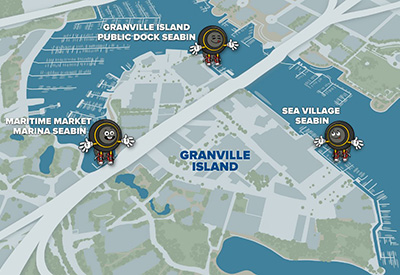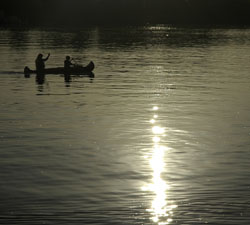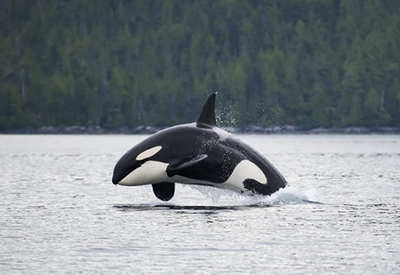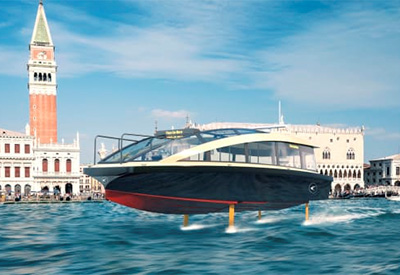Puget Sound is now a no-discharge zone for vessel sewage

May 10, 2018
British Columbia boaters will need to check out the new no-discharge zone before heading off to American waters in Puget Sound.
A No Discharge Zone (NDZ) for Puget Sound and certain adjoining waters has been established. Boats may not release sewage, whether treated or not. The NDZ will help protect public health, water quality, and sensitive resources.
Chapter 173-228 WAC was adopted on April 9, 2018 . The rule is effective as of May 10, 2018. However, certain commercial vessels have a five year delay before the rule begins. There is no change for graywater discharges.
The Puget Sound is a unique and sensitive environment that is prone to poor water quality conditions. An NDZ addresses this source of preventable pollution from impacting our shellfish beds, beaches, and water quality.
Boaters can help make a difference for Puget Sound
Washington state boaters already practice good stewardship of our waters. The vast majority of vessels already have holding tanks for use at pumpout facilities or to hold their sewage (blackwater) until they reach the ocean for discharge. Help us keep the Puget Sound sewage free, see our recreational boating resources or our commercial vessel resources for more information.
Recreational boating resources
The rule is effective as of May 10, 2018 for all recreational boats. Chapter 173-228 WAC was adopted on April 9, 2018.
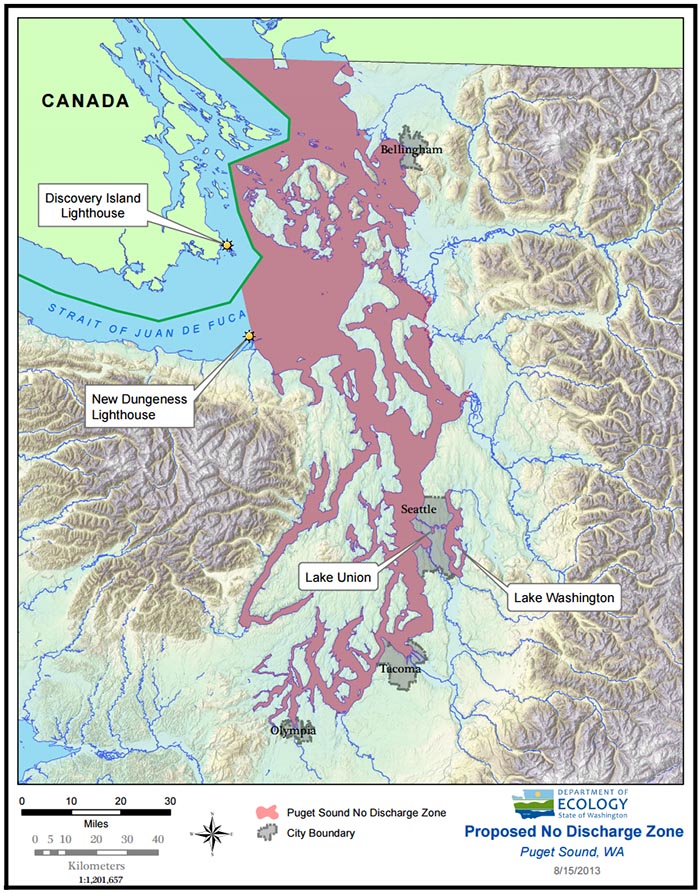
Most recreational boats already have holding tanks and boaters are now not allowed to discharge sewage, treated or untreated into Puget Sound. If your boat has a toilet on board, you are required to have a marine sanitation device (MSD).
• If you have a treatment MSD (Type I or Type II), you will need to secure it in a manner which prevents discharge of treated or untreated sewage. See the Coast Guard regulations for more details. Acceptable methods of securing the device include:
o Closing the seacock and removing the handle;
o Padlocking the seacock in the closed position;
o Using a non-releasable wire-tie to hold the seacock in the closed position; or
o Locking the door to the space enclosing the toilets with a padlock or door handle key lock.
An alternative to securing your device is replacing your Type I or Type II MSD with a Type III holding tank.
• If you have a toilet with a holding tank (Type III MSD) you can use the variety of pumpout facilities to pumpout your sewage (see links below).
• Vessels without installed toilets must dispose of any collected sewage from portable toilets or other containment devices at facilities in a manner that complies with state law (ashore in proper facility). Don’t dump it in the water.
Where can you dispose of boat sewage?
You can use stationary pumpouts, mobile pumpout boats, pumping services (trucks, barges), or discharge outside the NDZ following state requirements.
To find a pumpoutin Washington State go to http://pumpoutwashington.org or visit the State Parks pumpout website. http://parks.state.wa.us/657/pumpout


